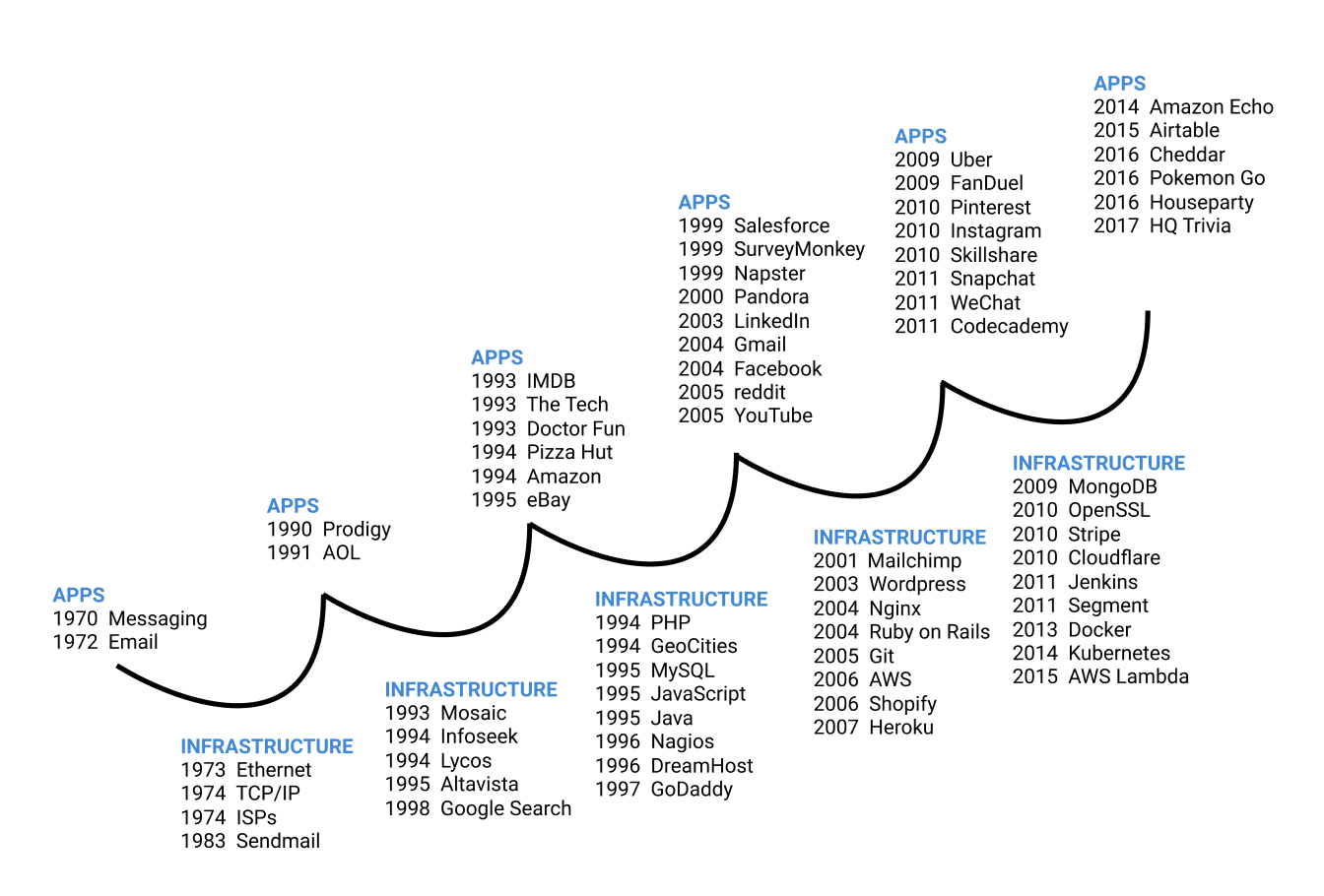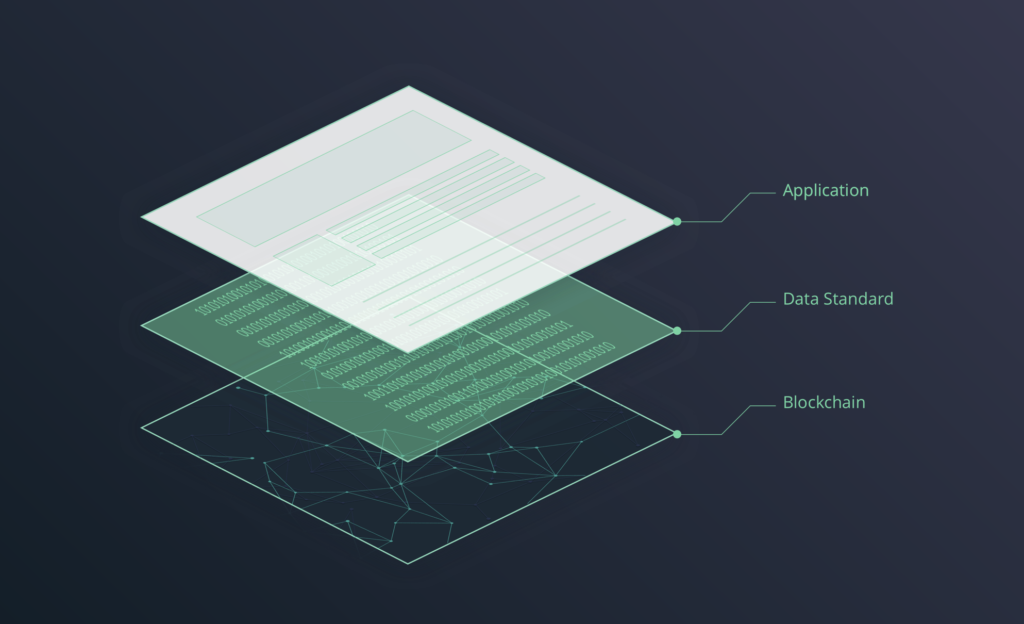Flexible Systems
Top-down initiatives to reconstruct entire sectors like digital identity are too brittle to succeed. Flexible systems require a different mindset.

Official records are one of the most powerful forms of social currency. They allow people to demonstrate proof of their abilities, accomplishments, and experiences in a way that helps them gain entrance to new realms of economic possibility.
However, unlike every other sector (media, communications, engineering, finance, etc.), official records largely rely on old formats like paper, wax, and PDF for certification, all of which are hard to verify and easy to fake. This is big reason why public blockchains are exciting, because they have the power to prove the authenticity, ownership, and integrity of a natively digital record. The combination of strong cryptography and public blockchains provide a new technical infrastructure that gives people the ability to manage their own records of achievement in a format that is digital, easily shared, and instantly verifiable using a global verification network.
Of course, exciting new frontiers can also bring out some impatient instincts.
The Instinct to Centralize
Anytime the world gets a powerful new technology with the potential to make old dreams come true, the instinct is to harness the power by immediately attempting to pre-architect all desired outcomes in one step. This tempting instinct creeps into both the strategic and technical arenas, ultimately distracting from long-term transformation with a short-term eagerness.
Strategic Mistakes
Centralization can be powerful and effective in many ways, and so it’s no surprise that strategic plans for new technologies often begin with the word “Universal” — as in universal ID cards, universal academic records, and so on. The problem with instituting this type of top-down control is that it presumes to understand all possible situations, now and in the future, for how the system must operate. This type of vision is not only brittle, it ignores the unique traits of the technology and imposes non-existent limitations.
Let’s look at two examples.
A universal ID card for a country usually proposes to place all personally identifiable information in one government controlled system to access a variety of social benefits. While this might feel efficient for a government, overconsolidation of data creates a honey pot that ultimately threatens the safety of citizens and misses a larger opportunity: public blockchains make it possible for citizens to transact and share specific attributes about themselves, without the vulnerability of storing all their data within a single database.
A universal academic record proposed by schools typically sounds like this: 1. Write data to a secure common student record 2. Participate in verification revenue over time 3. Accelerate admissions and matriculation with a standard set of definitions. This is basically the Clearing House model, which isn’t new and doesn’t require a blockchain. This mindset also misses a profound reality that education now comes from a proliferation of alternative providers over a lifetime, and that the blockchain enables every student to act as their own lifelong registrar.
In both examples, the desire is for a top-down business model. This is powerful, but misses the longer-term possibility of real transformation that generates an entirely new set of conditions for social organization, and even monetization.
Technical Mistakes
New technical initiatives often feel pressure to provide immediate value, to deliver the dream in too few steps. This eagerness is typically expressed in one of two ways. Let’s look at these examples as they relate to public, decentralized blockchains which act as a simple foundational layer for further layers of innovation.
Centralized control over the technology provides greater freedom to invent, extend features, and move quickly. Often called Decentralized Ledger Technology (DLT), these initiatives may be somehow using a blockchain data structure, but in the context of a shared database. While a shared database may provide great value, it doesn’t provide the iconic features of immutability, permissionless innovation, or censorship resistance. Simply using a shared database would be more effective than creating a DLT system for many, if not most, use cases.
Smarter chains can also seem like another shortcut to wish fulfillment. By having more features built at the chain level, more functionality arrives out of the box, before applications for the chain ever get developed. The problem lies in both how this function limits unforeseen future applications and creates a larger surface area for failure, which is the last thing you want in a foundation layer.
A More Durable Approach
Long-lasting technologies are built like geological strata that layer on top of previous achievements. Generally, each layer addresses a specific need. Over time, this stack of technologies adds up in ways that weren’t possible to predict and are far more transformative than previously imagined. Investor Fred Wilson recently posted a reflection on this process:
“First, apps inspire infrastructure. That infrastructure enables new apps.”

This architectural separation of concerns, between infrastructure and apps, is what enables the perpetual momentum of growth that accrues over time. Good planning starts with the realization that new initiatives operate within social and technical ecosystems that are not entirely ours to control. There are realities and forces at work we must collaborate with, along with patterns of success for which we have some good rules of thumb.
The first rule is that the foundational layers of infrastructure should be simple. Let’s use the Internet as an example. By all measures, it is a “dumb” network, meaning that it doesn’t do anything but transmit packets of information. However, it is also this simplicity that makes it strong and capable of supporting all manner of sophisticated apps that come and go over time. Bitcoin has a similar heritage because the network has a similar simplicity, only moving packets of value. While that simplicity is frustrating for some, this industrial layer of strength provides the solid foundation, and the space, necessary for future innovations at higher application layers.
It is important to keep in mind the many parts of a technology stack when trying to understand technology news and vendor offerings. Without a framework, the myriad of new initiatives will seem overwhelming and perhaps contradictory. Some vendors are offering blockchains, others are promoting data standards, and a few are actually providing applications that you can use, like Learning Machine. Each of these layers interrelate and directly contribute (or not) to a desired set of values or outcomes. So let’s outline the the layers of the Learning Machine technology stack, starting with the application (the product).

- Application: Learning Machine provides an online system to easily create, issue, and manage digital records that are recipient owned and instantly verifiable with any public blockchain.
- Data Standard: Blockerts and the Verifiable Claims specification are the Open Standard for how to create, issue, and verify blockchain-based records. It is the reason records issued by Learning Machine are interoperable and can be anchored to any chain. The Blockcerts Universal Verifier also ensures that these records can verify regardless of chain or vendor.
- Blockchain: This foundational layer is public infrastructure, like the Internet, that is supported by a global network. Learning Machine recommends rooting records to public decentralized chains with enough scale and adoption to last a lifetime.
Keeping these layers separate allows for progress and flexibility to happen at each layer, which is essential for growing better at their core functions — the blockchain layer provides secure verification; the Data standard allows for interoperability; the Application allows for convenience and real-world usage.
Understanding how to better facilitate flexible systems is important for pursuing the end goal, which is to empower people with the social currency of their records. To be effective, any currency requires ownership, trust, convenience, independence, and interoperability.
Contact us if you would like to learn more about issuing trustworthy digital records that empower people with real social currency.